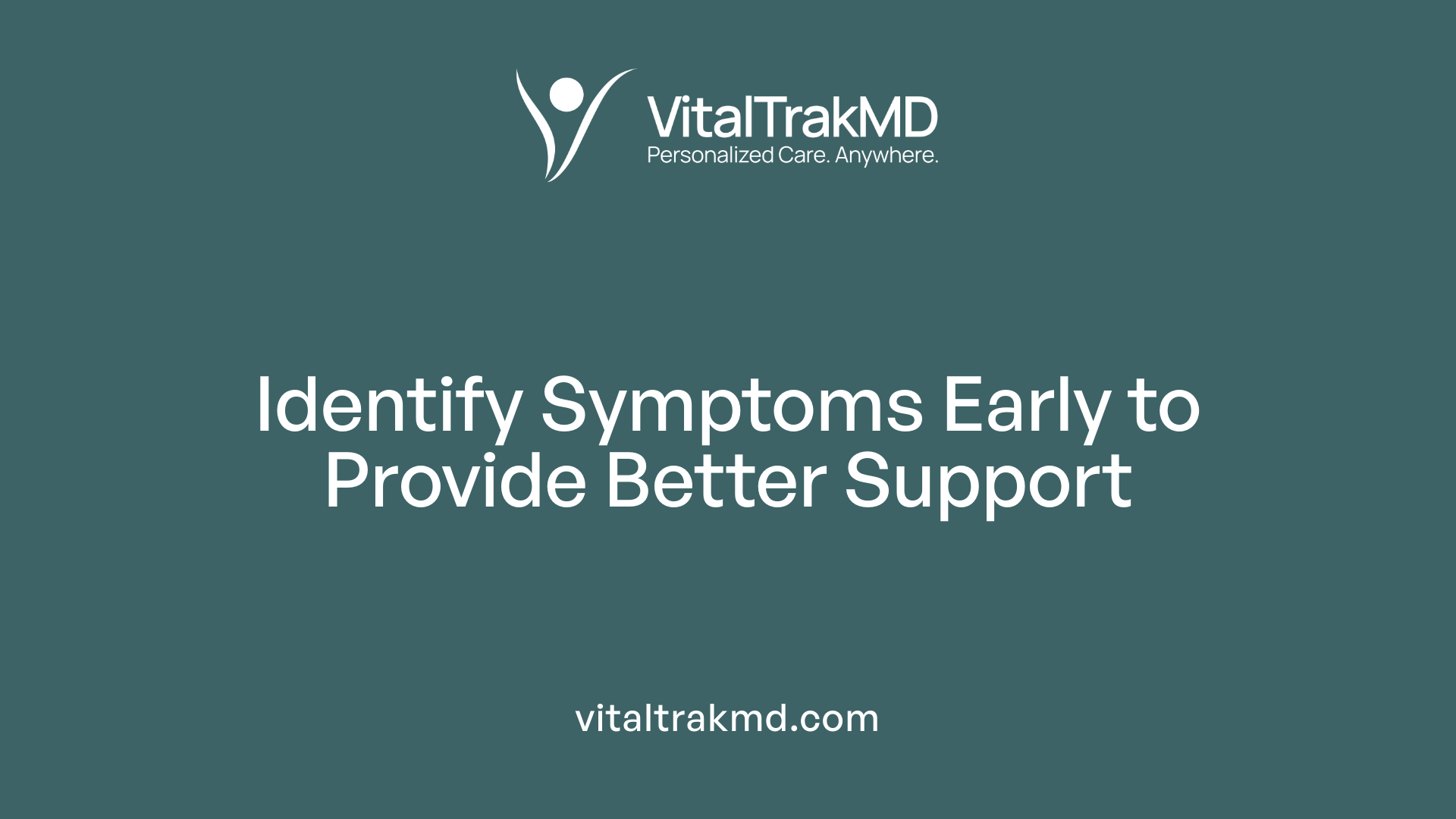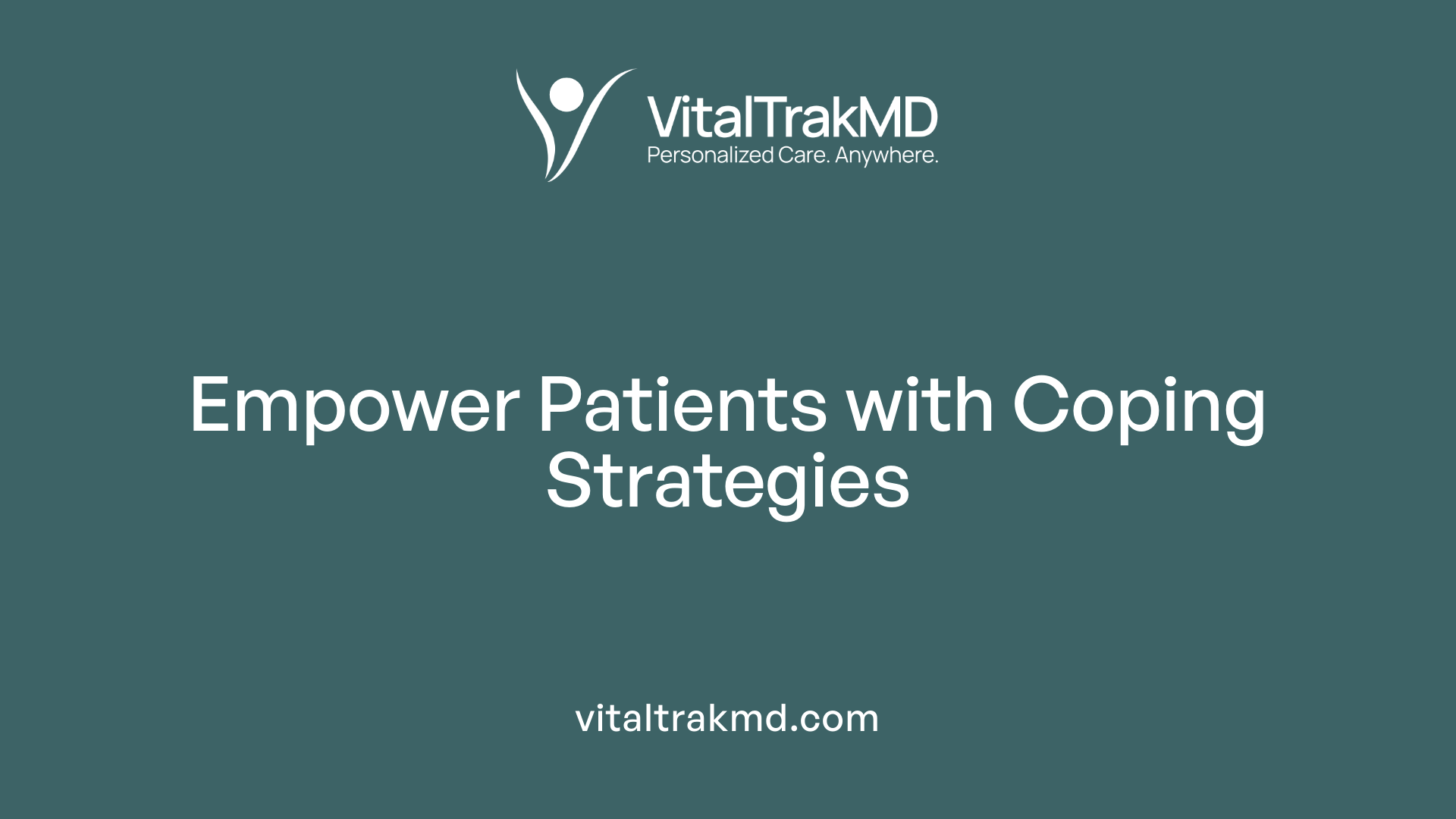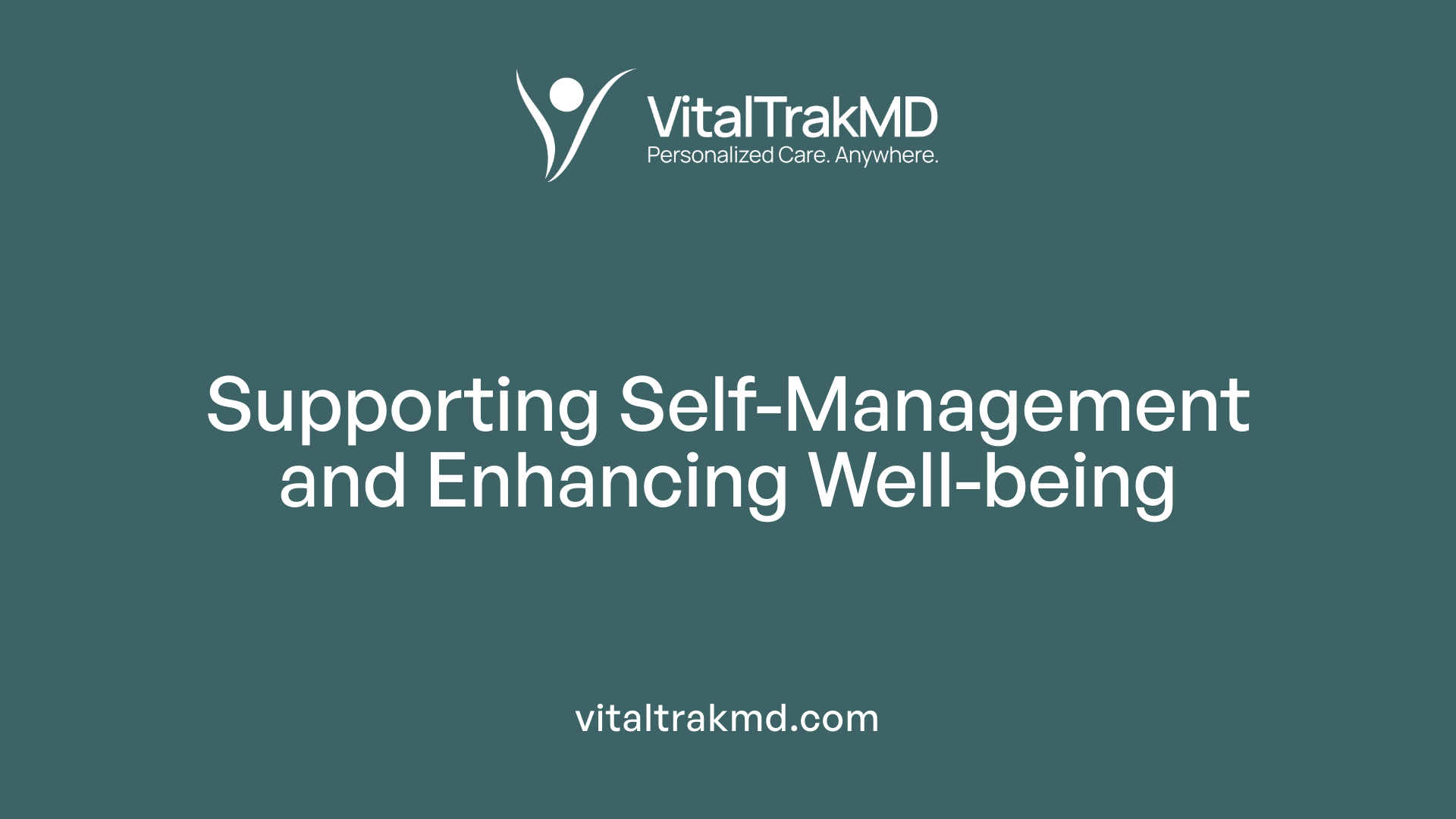Supporting Patients With Practical Tips for Reducing Health-Related Anxiety

Understanding and Addressing Health-Related Anxiety in Clinical Practice
Health-related anxiety, also known as illness anxiety or hypochondriasis, is a condition characterized by excessive preoccupation and worry about having or developing a serious medical illness. It often persists despite reassurance from healthcare professionals and can significantly interfere with daily life. This article explores practical ways healthcare providers can support patients experiencing health anxiety, from recognition to management strategies, and emphasizes the importance of integrating mental health support into patient care.
Creating a Calming Medical Environment

How can healthcare systems improve patient care by integrating mental health support for health anxiety?
Healthcare organizations can significantly enhance patient care by embedding mental health resources into the routine healthcare setting. Incorporating mental health support within primary care makes help more accessible and reduces stigma.
Training healthcare providers in recognizing and managing health anxiety allows for early intervention. Providers learn to assess mental health risks, deliver brief therapeutic strategies, and prescribe suitable medications when needed.
Developing integrated care models — where mental health professionals work alongside medical staff in a collaborative team — ensures continuous, comprehensive treatment.
Effective referral networks enable patients to access specialized mental health services promptly, while ongoing supervision from mental health experts maintains care quality.
Supporting policies that fund mental health programs, facilitate workforce expansion, and encourage screening for anxiety and other mental health conditions further promote holistic patient care.
This approach not only addresses health anxiety more effectively but also reduces unnecessary medical testing and visits, improving overall health outcomes.
How does health anxiety develop and what impact does it have on patients?
Health anxiety stems from a mix of biological, psychological, and social influences. Childhood illness experiences can shape heightened health concerns later in life.
Dysfunctional beliefs about health, such as fearing serious illness from minor symptoms, contribute to anxiety. Attentional biases make individuals hyperaware of bodily sensations, increasing worry.
Maladaptive behaviors, like reassurance seeking and constant body monitoring, reinforce health fears. Misinterpreting normal bodily signs as dangerous triggers continuous worry.
Additionally, intolerance of uncertainty causes distress when symptoms or health info is ambiguous.
The effects of health anxiety are profound. It can interfere with daily activities, lead to excessive healthcare utilization, and cause emotional suffering.
Individuals with untreated health anxiety often experience diminished quality of life, strained relationships, and ongoing stress, emphasizing the importance of early and effective intervention.
| Aspect | Description | Effects on Patients |
|---|---|---|
| Origins of health anxiety | Childhood illnesses, negative beliefs, attentional biases, coping habits, and intolerance of uncertainty contribute. | Contribute to persistent anxiety, excessive health monitoring, and worry. |
| Impact on daily life | Interferes with work, social life, and emotional well-being. | Leads to avoidance, distress, and reduced life satisfaction. |
| Healthcare utilization | Frequent doctor visits and tests due to misinterpretations of symptoms. | Strains healthcare resources, increases costs, and may lead to unnecessary procedures. |
| Emotional consequences | Anxiety, fear, helplessness, and frustration. | Can develop into depression or other mental health disorders if unaddressed. |
Using an integrated approach, healthcare systems can better support patients with health anxiety, reducing their distress and improving their overall well-being.
Recognizing and Interpreting Signs of Health Anxiety

How can healthcare providers recognize the signs and symptoms of health-related anxiety?
Healthcare providers can identify health-related anxiety through careful observation of specific behaviors and physical signs. Patients often display frequent health checking behaviors, repeatedly seeking reassurance from doctors or loved ones. They may fixate excessively on bodily sensations, interpreting normal or benign symptoms as signs of severe illness, even after negative medical tests.
Many individuals with health anxiety tend to avoid medical environments to escape perceived threats or trigger anxiety. They often conduct extensive health research online, which can reinforce their worries. Physical symptoms such as headaches, a racing heart, dizziness, muscle tension, or nausea frequently accompany their concern, often worsened by their anxious state.
Recognizing these signs involves looking at the pattern and persistence of health worries, how they affect the patient’s daily life, and their emotional responses. If these behaviors and symptoms are recurrent and interfere significantly with functioning, it can suggest underlying health anxiety.
How does health anxiety develop and what impact does it have on patients?
Health anxiety generally develops from a combination of genetic, psychological, and environmental factors. Past experiences with serious illness, either personal or familial, can heighten vigilance to health concerns. Stress or traumatic health episodes may also trigger health-related fears.
This persistent preoccupation with health can lead to a cycle of increased anxiety and physical symptoms, which in turn fuels more worry. Patients often find themselves caught in a loop of symptom checking, reassurance seeking, and avoidance behaviors.
The impact on patients can be profound. It may cause significant distress, prevent them from engaging in normal activities, and strain relationships. Over time, it may result in excessive medical consultations, unnecessary tests, and sometimes, a preference to forego necessary medical care out of fear.
Understanding and recognizing these signs early allows healthcare providers to intervene with appropriate treatment strategies, such as cognitive-behavioral therapy (CBT), which targets the distorted beliefs and behaviors maintaining health anxiety.
Supporting Patients in Coping with Medical Anxiety

What are effective ways to support patients in coping with medical anxiety?
Supporting patients dealing with medical anxiety necessitates a compassionate approach centered on clear, empathetic communication. Healthcare providers should take time to explain procedures thoroughly, using language that is easy to understand, and tailoring explanations to each individual’s level of health literacy. Providing reassurance about the rarity of adverse outcomes and emphasizing ongoing care can alleviate catastrophic worries.
Creating a calming environment within the office also plays a crucial role. Having a welcoming reception, comfortable waiting areas decorated with soothing artwork, and offering distractions such as educational videos, calming music, or reading materials can significantly reduce patient tension.
Immediate anxiety can be managed with relaxation techniques like deep breathing exercises, progressive muscle relaxation, or mindfulness practices. Teaching patients these methods equips them with tools to self-soothe during stressful moments.
Incorporating behavioral strategies, such as encouraging the use of health diaries to track symptoms or worries, can empower patients and foster a sense of control.
For persistent health anxiety, cognitive-behavioral therapy (CBT) is highly effective. It helps patients challenge irrational fears and beliefs and develop healthier thought patterns. Sometimes, a referral to mental health professionals specializing in anxiety management is appropriate.
Medications, such as antidepressants, may be considered for severe or disabling anxiety, but they are most effective when combined with therapy.
Supporting patients with validated information, behavioral tools, and professional help forms a comprehensive approach to reducing health-related anxiety.
How can healthcare providers help manage and reduce health-related anxiety in their patients?
Healthcare professionals can significantly influence the management of health anxiety by fostering a trusting relationship and maintaining open lines of communication. Regularly providing evidence-based explanations about health risks helps counteract irrational fears and misconceptions.
Promoting stress management techniques, including mindfulness, meditation, and slow-paced breathing, can lessen immediate anxiety and build long-term resilience. Encouraging physical activity and healthy lifestyle choices further supports mental well-being.
Providers should recognize signs of anxiety and address them directly during consultations. Validating patient concerns and normalizing their feelings make patients feel understood and less isolated.
When anxiety persists or impairs daily functioning, referrals to mental health specialists specializing in CBT or anxiety disorders are recommended. Such therapies aim to reframe negative thought patterns and respond adaptively to health fears.
In some cases, medications like antidepressants (SSRIs) can be helpful, especially when combined with therapy. The goal is to reduce the cycle of health worry and equip patients with effective coping skills.
Educational interventions, including pamphlets and support groups, can also foster community and understanding among patients experiencing similar concerns.
Ultimately, a comprehensive management plan combining medical, psychological, and social support tailored to each patient helps decrease health-related anxiety.
| Approach | Description | Benefits |
|---|---|---|
| Effective communication | Clear, simple explanations about health and procedures | Reduces misunderstanding and fear |
| Relaxation techniques | Deep breathing, mindfulness, muscle relaxation | Immediate anxiety relief |
| Behavioral strategies | Use of health diaries, gradual exposure | Empowers control over worries |
| Cognitive therapies | CBT to challenge irrational beliefs | Long-term reduction of anxiety |
| Pharmacotherapy | Medications like antidepressants | Suitable for severe cases |
| Lifestyle changes | Exercise, healthy eating, sleep | Overall mental health improvement |
Addressing medical anxiety comprehensively involves understanding, reassurance, behavioral skills, and, when necessary, professional psychological support. This integrated approach helps create a more positive healthcare experience and fosters valuable resilience in patients.
Treatment and Management Options for Health Anxiety
What are the available treatment options for health-related anxiety?
Addressing health anxiety effectively requires a combination of therapeutic approaches and supportive strategies. The most recommended treatment is psychotherapy, particularly cognitive-behavioral therapy (CBT). This form of therapy helps individuals identify and challenge irrational thoughts about their health, such as catastrophizing or persistent catastrophizing about symptoms. CBT also aims to reduce compulsive behaviors like reassurance seeking — constantly calling doctors or repeatedly checking the body — which reinforce anxiety cycles.
Pharmacological treatments are another option, especially for severe or persistent cases. Selective serotonin reuptake inhibitors (SSRIs) such as fluoxetine or sertraline, and serotonin-norepinephrine reuptake inhibitors (SNRIs), are commonly prescribed by healthcare providers. These medications can help regulate anxiety symptoms and are typically used in conjunction with therapy for optimal results. Duration of medication use usually ranges from 6 to 12 months, with careful monitoring.
In addition to professional treatment, managing health anxiety involves behavioral changes and self-care. Patients are advised to avoid unnecessary medical tests or reassurance-seeking behaviors, which can inadvertently maintain anxiety. Instead, adopting stress management techniques such as mindfulness, relaxation exercises, and regular physical activity can promote mental well-being.
Social support and structured self-management programs also play a vital role. Building a healthy routine, staying connected with loved ones, and engaging in activities that distract from health worries help reduce preoccupations. Educating oneself about how normal bodily sensations and health fears work can empower patients to manage their symptoms better.
Finally, limiting exposure to internet health searches — often filled with alarming and unverified information — can prevent exacerbation of health fears. Engaging with credible sources and participating in support groups can encourage shared experiences and coping skills.
How does health anxiety develop and what impact does it have on patients?
Understanding the development of health anxiety reveals that it often begins with misinterpretation of normal or benign bodily sensations. Changes such as an increased heart rate or muscle tension are viewed as signs of serious illness, fueling fear and worry.
This cycle is further reinforced by seeking reassurance through medical tests, which provide only temporary relief. As these symptoms recur or new worries arise, patients may become fixated on their health, leading to persistent and excessive concern. The cycle can snowball, making daily functioning difficult.
The impact on patients is significant. They may experience frequent feelings of helplessness, nervousness, and panic, which interfere with work, social activities, and personal relationships. Many avoid certain places or situations out of fear, leading to social isolation.
Physiologically, symptoms like hyperventilation, increased heart rate, sweating, and trembling are common, compounding the sense of danger. Cognitively, persistent worries and all-or-nothing thinking exacerbate the condition.
When untreated, health anxiety can become chronic, reducing quality of life and leading to depression or other mental health issues. Early intervention, involving education, therapy, and support, is crucial to break this cycle and restore functional well-being.
| Aspect | Description | Additional Notes |
|---|---|---|
| Development | Misinterpretation of benign symptoms | Starts with normal bodily sensations misread as serious illness |
| Reinforcement | Medical reassurance and testing | Temporary relief, followed by renewed anxieties |
| Psychological Impact | Persistent worry, helplessness | Can lead to social withdrawal and depression |
| Physical Symptoms | Hyperventilation, chest pain, sweating | Intensify fears and physical discomfort |
| Behavioral Impact | Avoidance of situations | Limits daily activities and social interactions |
Understanding these patterns allows healthcare providers to tailor treatments that address both the thoughts and behaviors maintaining health anxiety.
Strategies for Supporting Patients’ Self-Management and Well-being

What are some effective strategies to support patients experiencing health-related anxiety?
Supporting patients who struggle with health anxiety involves a comprehensive approach centered around effective communication, education, and lifestyle modifications. Creating a trusting environment where patients feel heard and understood encourages openness about their concerns. Clinicians should focus on providing clear, understandable health information without excessive reassurance, which could inadvertently reinforce health worries. Instead, they help patients reframe unhelpful thoughts and challenge catastrophic beliefs, fostering a more balanced outlook.
Empowering patients to engage in their own care is vital. Providing structured resources such as workbooks and educational materials on health anxiety helps them develop self-management skills. Early referral to mental health professionals specializing in cognitive-behavioral therapy (CBT) can significantly reduce symptoms by addressing irrational thoughts and maladaptive behaviors.
Lifestyle changes play a crucial role. Encouraging a healthy diet rich in magnesium, B vitamins, and calcium can stabilize mood and reduce anxiety. Regular physical activity, sufficient sleep, and social activities help improve overall well-being and distract from health worries. Patients are advised to avoid stimulants like caffeine and nicotine, which can exacerbate anxiety symptoms.
Teaching relaxation techniques such as mindfulness meditation, progressive muscle relaxation, and breathing exercises equips patients with practical tools to manage physical and emotional symptoms. Structured problem-solving methods help break down worries into manageable steps, decreasing feelings of helplessness. Building self-esteem through assertiveness training and self-acceptance enhances resilience and reduces susceptibility to health-related worries.
Involving family or friends in the care process can provide emotional support and assist with note-taking or following through on coping strategies. A coordinated approach from healthcare providers ensures that patients receive consistent messages and appropriate care, emphasizing ongoing support rather than short-term reassurance.
What are effective ways to support patients in coping with medical anxiety?
Coping with medical anxiety requires both emotional reassurance and practical strategies. Patients benefit from pre-visit preparation, such as understanding what to expect during procedures, which reduces the fear of unknowns. Healthcare professionals should listen attentively to their fears, validate their feelings, and offer clear, jargon-free explanations about procedures, potential sensations, and outcomes.
Using relaxation techniques like diaphragmatic breathing, meditation, or listening to calming music can help manage physical symptoms like rapid heartbeat or hyperventilation. During visits, involving supportive friends or family members offers reassurance and helps patients process information.
Encouraging patients to practice mindfulness, such as body scans or grounding exercises, can keep their attention focused on the present moment rather than catastrophic thoughts. Cognitive strategies like cognitive defusion—a method of distancing oneself from anxious thoughts—allow patients to realize that worrying thoughts are not facts.
Moving attention away from health symptoms by engaging in meaningful activities—like reading, gardening, or problem-solving exercises—can disrupt the cycle of health anxiety. Structured self-help tools, including workbooks and online resources, guide patients in challenging unhelpful thoughts and reducing reassurance-seeking behaviors.
In some cases, medication such as sedatives or antidepressants may be used temporarily under medical supervision to ease severe symptoms. Combining pharmacological treatment with therapy tends to produce the best outcomes.
Supporting patients with health anxiety involves a gentle, empathetic approach that emphasizes control over symptoms, normalizes fears, and promotes active coping skills. When anxiety significantly impacts daily life, professional mental health intervention becomes essential to foster long-term resilience and well-being.
Implementing Practical Support Techniques in Healthcare Practice
How can healthcare providers help manage and reduce health-related anxiety in their patients?
Healthcare providers play a crucial role in alleviating patients' health anxiety. One of the first steps involves creating a welcoming and calm environment. This can be achieved by offering comfortable waiting areas decorated with calming colors, artwork, and soothing music to ease nerves.
Effective communication is essential. Providers should listen sincerely to patients’ concerns and offer clear, straightforward explanations about their conditions and procedures. Using understandable language and avoiding complex medical jargon helps demystify what patients are experiencing, reducing fears rooted in the unknown.
Pre-procedure briefing is another helpful strategy. Informing patients about what will happen before, during, and after a medical procedure can significantly lessen their anxiety. Properly managing expectations and explaining potential sensations or outcomes boost trust and confidence.
Involving patients in their own care empowers them and diminishes feelings of helplessness. Writing out detailed treatment plans and encouraging patients to revisit these documents later provides a reference point, while bringing a supportive person along offers emotional reassurance.
Supporting behavioral strategies such as mindfulness, deep breathing exercises, and progressive muscle relaxation can equip patients with tools to manage anxiety symptoms actively. Mental health referrals, particularly for those with persistent or severe anxiety, help integrate specialized psychological support.
Healthcare providers should also be attentive to signs of anxiety, including physical symptoms like sweating, nausea, and rapid heartbeat, or mental symptoms such as persistent worry or catastrophic thinking. Addressing these proactively and compassionately fosters a trusting relationship.
Encouraging active participation, coping strategies, and social support not only reduces immediate anxiety but also promotes long-term well-being. Overall, an empathetic, informative, and supportive approach tailored to each patient's needs can significantly lower health-related anxieties and improve overall care experiences.
How can healthcare systems improve patient care by integrating mental health support for health anxiety?
To enhance patient care, healthcare systems should integrate mental health support directly into primary and specialty care settings. This includes training healthcare providers to recognize signs of health anxiety and equipping them with tools to provide initial psychological support or appropriate referrals.
Systems can incorporate screening for health anxiety into routine assessments, enabling early identification and intervention. Embedding mental health professionals such as psychologists or counselors within healthcare teams ensures that patients have ready access to specialized care.
Educational resources focused on understanding health anxiety and taught strategies, like cognitive-behavioral techniques, should be made available in clinics. Support groups or workshops can build community and shared understanding, empowering patients to manage their worries better.
Furthermore, creating a systematic approach to follow-up can help monitor progress, adjust treatment plans, and reinforce coping strategies over time. Incorporating digital tools such as apps for mindfulness, relaxation exercises, or symptom tracking adds accessible, continuous support.
Overall, a holistic healthcare model that considers mental health as an integral component of physical health enhances patient outcomes, minimizes unnecessary testing due to health fears, and fosters a supportive environment that reduces overall anxiety.
| Aspect | Implementation Strategy | Benefits |
|---|---|---|
| Environmental Adjustments | Calming decor, music, comfortable seating | Reduces stress pre-visit |
| Effective Communication | Clear explanations, answering questions | Builds trust, reduces fears |
| Patient Education & Involvement | Providing written plans, involving family | Empowers patients, improves adherence |
| Mental Health Integration | On-site mental health staff, screening tools | Early intervention, comprehensive care |
| Support Resources | Support groups, online tools | Community support, skill-building |
Comprehensive Approach to Managing Health Anxiety
Addressing health-related anxiety requires a compassionate, integrated approach that combines environmental adjustments, patient education, behavioral interventions, and mental health support. Recognizing the signs early and implementing tailored strategies can significantly diminish anxiety’s impact, enhancing patient well-being and healthcare outcomes. Training providers in mental health assessment, fostering open communication, and advocating for system-wide collaboration ensures sustainable improvements in managing health anxiety across healthcare settings.
References
- The anxious patient: How to calm a patient down to ...
- How to Help Someone with Anxiety
- Coping with an anxiety disorder tips
- Managing and treating anxiety
- How to Stay Calm During Medical Procedures
- How to Reduce Patient Anxiety
- Health Anxiety Self-Help Resources
- Health Anxiety: What It is and How to Beat It
- How to Overcome Health Anxiety: 3 Helpful Tips
- Health Anxiety: What It is and How to Beat It
Recent articles
Want to Feel Better and Live Healthier?
Join hundreds of patients taking control of their health with personalized care that fits their life – not the other way around.
Rated 4.8/5 by 32+ customers







